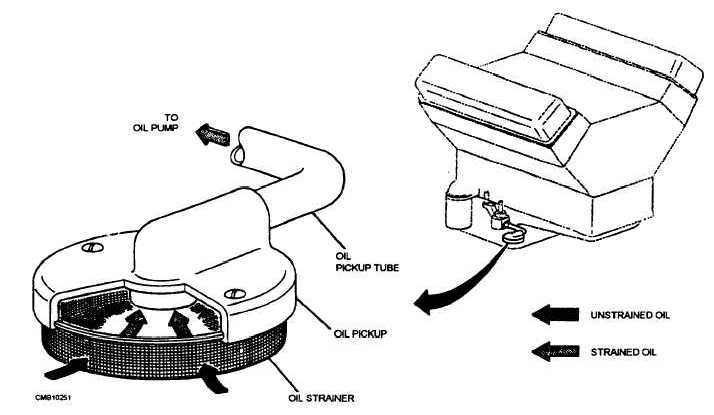Oil Pickup and Strainer
The oil pickup is a tube that extends from the oil pump to the bottom of the oil pan. One end of the pickup tube bolts or screws into the oil pump or to the engine block. The other end holds the strainer.
The strainer has a mesh screen suitable for straining large particles from the oil and yet passes a sufficient quantity of oil to the inlet side of the oil pump. The strainer is located so all oil entering the pump from the oil pan must flow through it. Some assemblies also incorporate a safety valve that opens in the event the strainers become clogged, thus bypassing oil to the pump. Strainer assemblies may be either the floating or the fixed type.
The floating strainer has a sealed air chamber, is hinged to the oil pump inlet, and floats just below the top of the oil. As the oil level changes, the floating intake will rise or fall accordingly. This action allows all oil taken into the pump to come from the surface This design prevents the pump from drawing oil from the bottom of the oil pan where dirt, water, and sludge are likely to collect. The strainer screen is held to the float by a holding clip. The up and down movement of the float is limited by stops.
The fixed strainer (fig. 6-23) is simply an inverted funnel-like device, placed about 1/2 inch to 1 inch from the bottom of the oil pan. This device prevents any sludge or dirt that has accumulated from entering and circulating through the system. The assembly is attached solidly to the oil pump in a fixed position.
Oil Filter
The oil filter removes most of the impurities that have been picked up by the oil, as it circulates through the engine. Designed to be replaced readily, the filter is mounted in an accessible location outside the engine. There are two basic filter element configurations - the cartridge type and spin-on type.

Figure 6-23. - Oil pickup and strainer.
Continue Reading